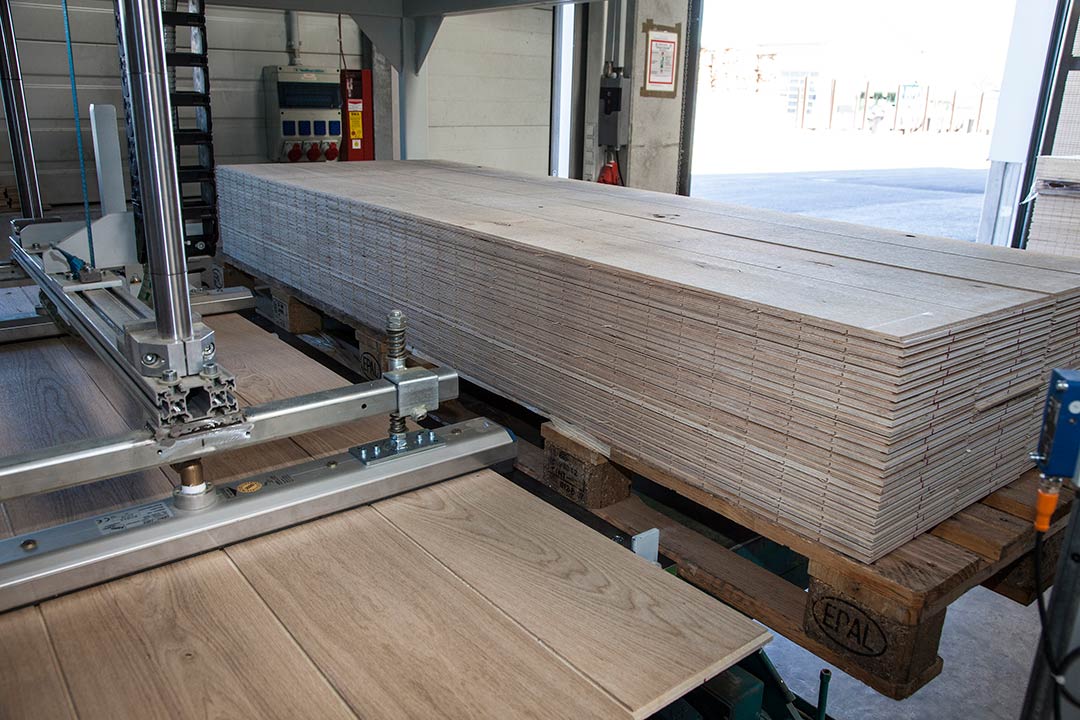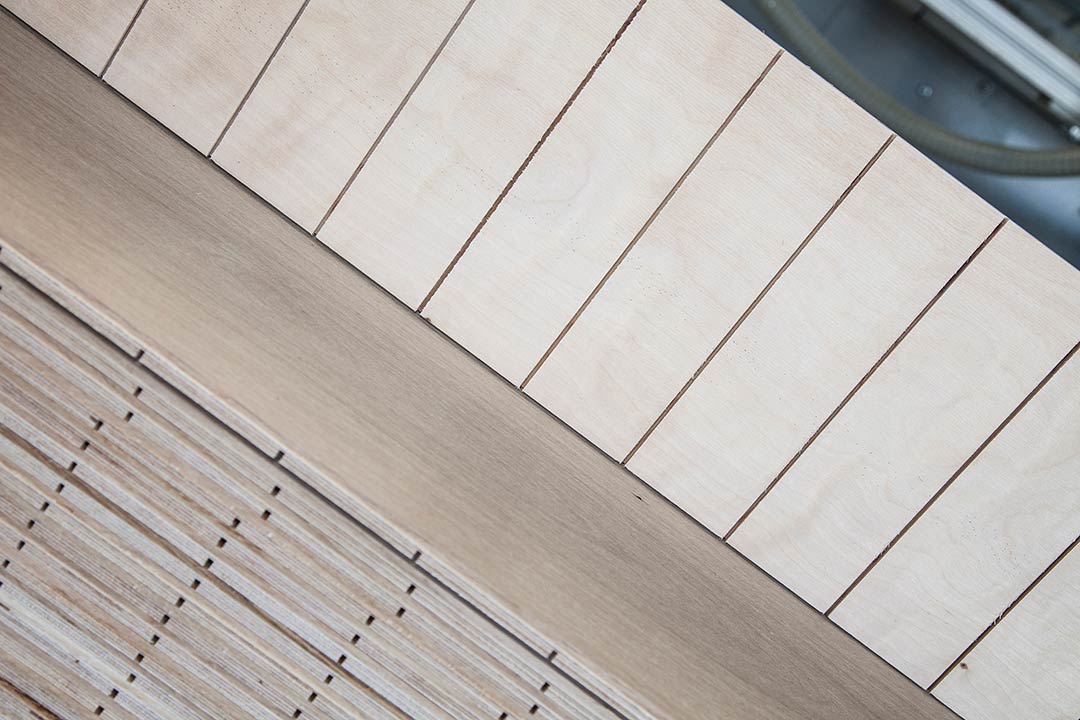 Sawing components of the parquet production line: roller conveyor (in the fore-ground), chain conveyor with buffer function, automatic infeed system and K34C/2600 multirip saw.
Sawing components of the parquet production line: roller conveyor (in the fore-ground), chain conveyor with buffer function, automatic infeed system and K34C/2600 multirip saw.
In order to produce permanently functional and low-distortion parquet, so-called stress grooves are required in the carrier layer. These prevent the floor from being damaged by stresses that can occur due to changing climatic conditions and ensure dimensionally stable and durable parquet floors.
One of the leading manufacturers of two-layer finished parquet in Germany invested in the largely automated partial production of large-format parquet products. For this purpose, the company Paul from Dürmentingen in Germany supplied the sawing components of the line, which were tailored to the customer's requirements, including roller conveyor, chain conveyor, infeed system and multirip saw. The chain conveyor serves as a buffer for an economical and sustainable operation of the line.
At the beginning of the process, the birch multiplex carrier layer and the top layer are glued together with white glue. This operation is carried out automatically by vacuum technology and is completed by pressing the stacks of workpieces. A specially designed chain conveyor then buffers the stacks. Only after this buffer is fully loaded with six stacks does the multirip saw switch on automatically. The workpieces are fed individually to the saw, whereby special hold-down devices enable exact guidance, even with bent workpieces. The multirip saw with an opening width of 2600 mm now grooves the parquet planks from below using 35 saw blades. A vacuum stacker layers the workpieces on pallets and then they are transported away for further processing. As the sawing process is carried out at intervals depending on the filling level of the buffer and the saw is not in continuous operation, energy requirement and noise emission are reduced. Resources are conserved and efficiency is increased.
Paul, a company with a long tradition in Upper Swabia, created the connection of in-house technology with existing components from different manufacturers on the customer side for this application. The fact that Paul is one of the few manufacturers to offer panel saws with opening widths of up to 3000 millimeters made the decision easier for the parquet manufacturer. The minimum processing length also plays an important role when sawing the planks whilst they are passing crosswise. Here, too, Paul's multirip saw scored with only 150 millimeters. "We were also convinced by the robust quality and the solid machine construction" explained the customer. "After minor teething troubles, which we were able to successfully eliminate together with the manufacturer, we are now very satisfied with this system".
As the trend is away from stand-alone machines and towards increasingly complex complete systems, the machine manufacturer has been relying on individual complete solutions for many years. But also the extension of existing systems by integrating new functions and process steps offers development possibilities for the future.


